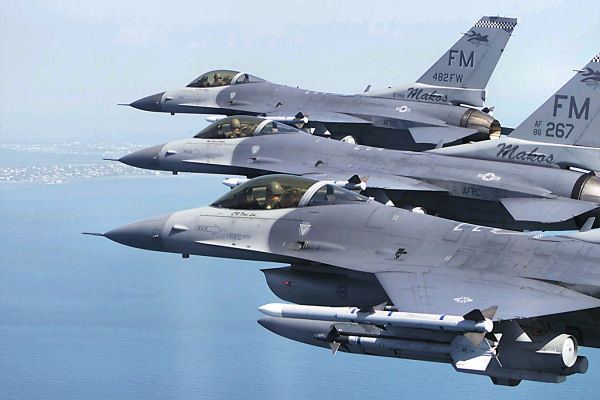Country United States | Role Fighter | |
 | ||
Active 1943–1945; 1947–1949; 1952; 1955–1957; 1992–present Branch United States Air Force Part of Air Force Reserve Command Engagements European Theater of Operations | ||
The 482d Operations Group is a United States Air Force Reserve unit assigned to the 482d Fighter Wing. It is stationed at Homestead Joint Air Reserve Base, Florida, and is a direct successor to the 482d Bombardment Group.
Contents
During World War II, the group was organized and activated as the 482d Bombardment Group (Pathfinder), the only Eighth Air Force radar-equipped pathfinder heavy bomber group. Its Boeing B-17 Flying Fortress and Consolidated B-24 Liberator aircraft were equipped with first generation radar to guide other bombardment groups to targets obscured by cloud cover over Occupied Europe and Nazi Germany ("blind bombing").
Overview
The mission of the 482d Operations Group is to train and equip reservists to respond to wartime and peacetime taskings as directed by higher headquarters. The group specifically trains for mobility, deployment, and employment.
World War II
In the summer of 1943, Eighth Air Force conducted experiments with radar for high-altitude bombing through clouds. A special organization, the 482d Bombardment Group (Pathfinder), was formed to use this technology and be devoted to pathfinder techniques using the H2S and H2X (APS-15) radars.
The 482d Bombardment Group was formed at RAF Alconbury on 20 August 1943, under the command of Lt Col Baskin R. Lawrence, who had been training its 92d Bombardment Group cadre since 1 May. The 812th Bombardment Squadron arrived from the United States in September with 12 new Boeing B-17 Flying Fortress aircraft equipped with U.S. manufactured H2S radar. The 813th Bombardment Squadron was a replacement for the 325th Bombardment Squadron of the 92d Group, which had been training since may in B-17s equipped with British-manufactured H2S and Oboe sets. The 814th Bombardment Squadron flew Consolidated B-24 Liberator aircraft acquired from the 479th Antisubmarine Group, commanded by Col Howard Moore. Col Moore assumed command of the 482d on 22 November 1943, serving until 15 December 1944. The 482d Group was one of two Eighth Air Force bomber groups activated overseas The 482d BG provided a force of radar-equipped aircraft that preceded bomber formations flying from England to Germany and indicated targets such as airfields, submarine installations, and marshalling yards obscured by weather. Eight Air Force dubbed the group with the modifier "Pathfinder" because of its similarity of mission in locating and designating obscured targets that was also the mission of the Pathfinder Force of the Royal Air Force.
The 482d provided lead aircraft for other bomb groups throughout the winter of 1943/44. As lead aircraft, 482d B-17s and B-24s usually flew missions from stations of other groups with some key personnel of the host group flying in the pathfinder aircraft. The group earned a Distinguished Unit Citation for 11 January 1944 mission leading Eighth Air Force bombers to targets such as aircraft factories in central Germany. Although weather prevented effective fighter protection against enemy aircraft, the group bombed assigned targets and destroyed many enemy airplanes. Individual aircraft and crews led Eighth Air Force elements on attacks against factories at Gotha, Brunswick, Schweinfurt, and other German industrial centers during Big Week, 20–25 February 1944.
The 482d was transferred to VIII Air Force Composite Command in February 1944 when emphasis shifted to training radar operators. The 482d began an H2X training school on 21 February 1944, initially using RAF instructors. It graduated a class of 36 radar navigators each month, as the PFF was decentralized first to the air divisions and then to the combat groups, where each assigned one squadron to be its PFF unit. Training and experimentation remained the chief role of the 482d for the remainder of war.
In March 1944, the 482d BG was taken off combat operations and became a development unit for various radar devices in addition to its training function, but continued to undertake special operations. With radar, photographed parts of France, the Low Countries, and Germany for training and briefing combat crews. While on experimental flights, often bombed bridges, fuel depots, power plants, and railroad stations. On 6 June, it provided 18 crews to lead bomb groups in support of the Allied invasion of Normandy, on pathfinder missions to bomb coastal defenses and attacks on traffic centers behind the beachhead.
From August 1944 to April 1945, the 482d conducted 202 radar scope and 'pickling' sorties over hostile territory without loss, dropping 45 tons of bombs in Nazi controlled territory. In November 1944, the group was redesignated as the 482d Bombardment Group, Heavy.
The group left England for the United States in May 1945. The aircraft departed between 27 and 30 May 1945. The ground echelon sailed on the RMS Queen Elizabeth from Gourock, Scotland on 24 June 1945. The group re-established at Victorville Army Air Field, California on 5 July 1945, but inactivated on 1 September 1945
Cold War
Trained in the Reserve as a heavy bombardment group, June 1947 – June 1949; as a troop carrier group, June–December 1952; and as a fighter-bomber group flying various fighter and trainer aircraft, May 1955 – November 1957.
Fighter operations resume
From August 1992 controlled the 482d Fighter Wing's flying and aerial port operations. When Hurricane Andrew devastated Homestead later that month, flying operations moved to Wright-Patterson Air Force Base, Ohio from September to December 1992 and to MacDill Air Force Base, Florida from February 1993 until March 1994, before returning to Homestead.
